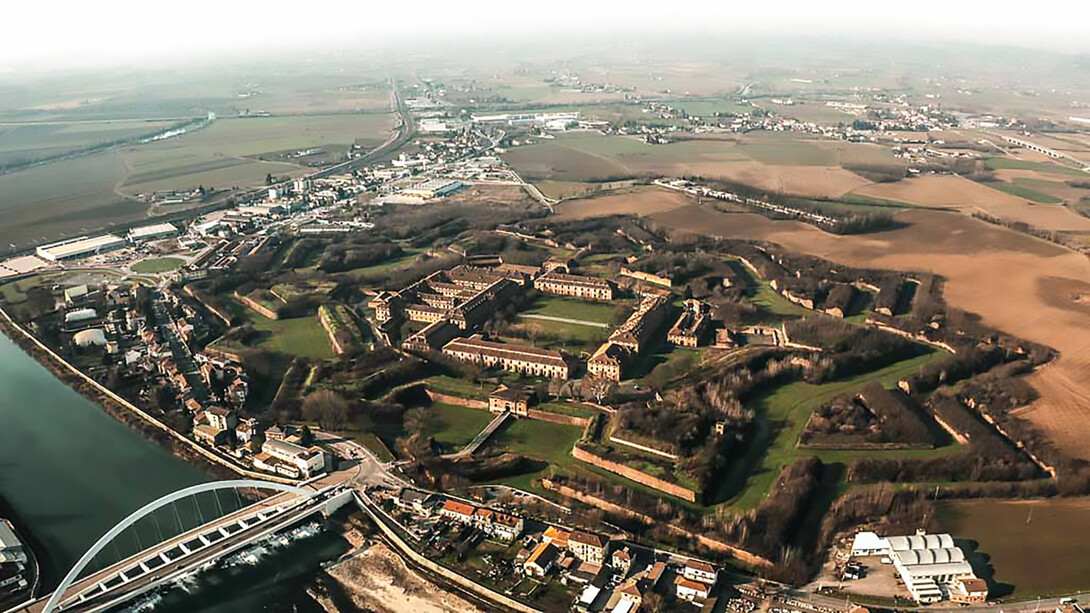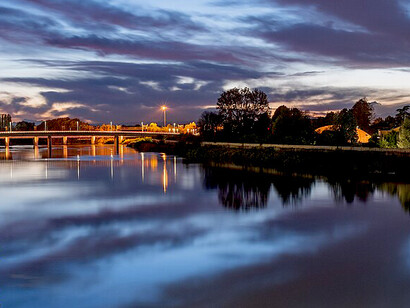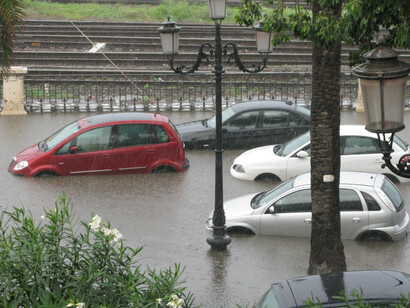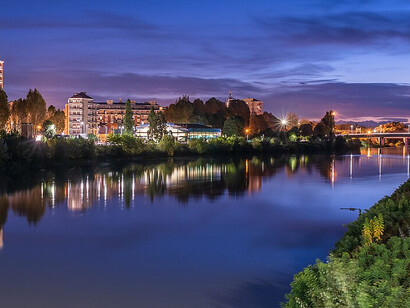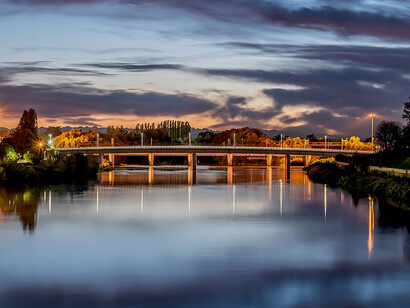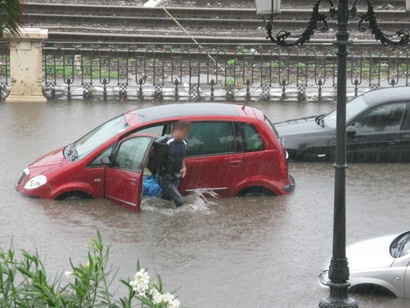The night of September 21st is a date I will hardly forget.
Not so much because the 21st has been declared the International Day of Peace by the United Nations since 1981—in a crazy age like ours, it's almost touching—but I can't forget it because the basement of our house—a watermill and, therefore, located right next to a stream that, due to heavy rains for one night, was thought to be the Amazon River—was flooded by its waters.
We knew it would rain that night, and heavily, but in more than thirty years of living there, something like this had never happened. I'd already woken up once because of the heavy rainstorm and went down to check on the situation: a little water was rising from the basement floor, but it didn't seem to be a problem. I tried to go back to bed, also to avoid alarming my wife, Cristina, but shortly thereafter I heard the sink and shower drains gurgling.
I immediately went out and disconnected the pipes leading from the drains to the septic tank—we don't have a sewer system—to prevent the water from coming back up into the house. It was raining heavily, and lightning flashed incessantly. I tried to get back into bed, but I couldn't sleep. At a certain point, I heard noises coming from both the cellar and the boiler room—very loud bangs that I couldn't explain. Once again, I went out into the downpour to head to the cellar, and this time I saw that the water had risen at least a meter. I went down, soaked to my waist, and when I struggled to open the cellar door, the freezer and other furniture came crashing down on me. The bangs I heard were the furniture and various objects colliding with each other.
I immediately closed the thick chestnut door and turned off the basement lights. I woke Cristina and ran to call a friend who was staying with us in the small guesthouse. He opened the door, dazed, not understanding why I was waking him in the middle of the night, but he did understand when he saw the raging river about to enter the house. I grabbed everything we needed, and we drove to our neighbor’s house; the road had partially collapsed, but we still managed to get through. To wake him, I had to bang on his door very loudly: it seemed that, in that exceptional circumstance, everyone was asleep except me.
That night, the river's fury washed away hundreds of meters of fence and dozens of trees, including a fig tree we were proud of with its immense crown. It exposed the foundations of the house and destroyed the thirty years of work we had put into transforming that abandoned place into a paradise, as those who came to visit us told us. That night, I was perfectly lucid and knew exactly what I had to do. But once we were safe, when the rain stopped with the first light of dawn, an infinite weariness descended upon me.
I wanted to begin this article with a personal story, and I apologize for that, but I did so because I like to talk about things I know, not just hearsay. Of course, I would have preferred not to be touched by such a tragic event, but this gives me the opportunity to write about a topic that's often discussed, especially when catastrophic events occur, but then gets forgotten; I'm talking about the hydrogeological instability of our region.
So, I bring you my experience.
Given where I live, I've always been concerned about the rules I need to follow when managing my land. Having to write this article and sticking to reliable sources as much as possible, which I always try to do when writing, I began a journey through the various websites of the relevant authorities to gain a deeper understanding of the regulations that define the areas of intervention and which authorities are responsible for this task. Along the way, I crossed stormy seas and currents that took me in opposing and contradictory directions, and I got lost in the maze of laws and regulations until I came across countless references to previous regulations. Unless you're a seasoned bureaucrat, it's best to stay safe at home.
But I'm no longer safe at home, given my recent experience, because even if I refrain from navigating these turbulent waters, they are the ones who come to visit me.
I realize that my wife and I aren't a significant number in the flood statistics, but I assure you that for both of us, the flood is a significant event. And in any case, this isn't the data we're discussing with you, but the current state of our country.
As mentioned previously, my wife and I live in a mill in the province of Alessandria, bordering Liguria, a region that has all too often hit the headlines for its landslides. I've lived there for over thirty years, and in all that time, I've only seen Forestry Corps personnel perform maintenance twice. For those who live in the city, I must explain that maintenance of public waterways is the responsibility of the competent authorities; if you own land bordering rivers or streams, you are prohibited from cutting down trees or shrubs that grow on the banks. At least, that's what the two teams I've seen over the years have told me, and that's what some websites, such as the Piedmont Region website, report1 where we read that the management of vegetation along watercourses is “[…] one of the main activities of the Forestry Teams […]”
It would appear that the buffer zone varies somewhat from region to region (for the Piedmont Region it is set at 10 meters from the edge of the bank of the incised riverbed2; in fact, when I built my fence I followed these rules.
Furthermore, the maintenance of watercourses does not only involve the removal of trees and shrubs present in their bed or in the buffer zones from their borders, but also the removal of stone material, which, in the case of the Piedmont Region, is delegated to the municipalities, sparing them, in the case of emergencies, by not making them pay anything as a fee for the removal of stone material (sic!). 3
But if the authorities don't intervene periodically and if the owners can't intervene, who will be responsible for maintaining the banks and riverbeds?
And so, due to the various weather phenomena that have recently appeared in Europe, such as water bombs, unprecedented hailstorms, cyclones, hurricanes, and self-regenerating thunderstorms—like the one that hit my area—(despite those who say the climate isn't changing), it happens that areas left in total neglect eventually collapse (in my area, every other year even the roads are blocked by landslides that remain there for years, before funding reaches municipalities that don't even have the resources to pay their few employees' salaries). Rivers overflow, and those who suffer are not only the people who are harmed and left completely alone by the authorities but also nature itself, which is disrupted and damaged by our negligence. The ARPA (Regional Environmental Protection Agency) data for Piedmont, referring to that night, speak of a cumulative amount of rainfall from 12:00 AM to 7:30 AM of 335.7 mm, the amount of rain that fell in the whole of 2023. The stream behind my house flows into the Erro stream, which that night recorded an overall increase in water level of 5.5 meters in six hours.4
Our country, Italy, is one of the most beautiful in the world; I've traveled extensively for a long time, and I've never seen a nation with such a concentration of enchanting landscapes as ours. Even if we weren't among the world's five most visited countries (and we should understand why Spain and France, which we have nothing to envy in terms of both landscape and art, are always ahead of us), even if Italy were for the benefit of us Italians alone, we should take much better care of our country, if only out of respect for those who came before us. On September 21st, the medieval bridge of San Rocco in Spigno Monferrato was damaged by the flooding of the Bormida River. This had never happened in over 800 years! Why?
Because those who lived on these lands decades and hundreds of years before us took care of their land, because at the time there was no Forestry Corps, region, or anything else. Our ancestors rolled up their sleeves and built riverbanks with stones from the riverbed, thus contributing to its lowering. With stones quarried from the land to make it arable, they erected dry stone walls, both to demarcate properties and to terrace the hilly areas. With the same stones, they built the houses where we still live today and constructed the retaining walls for the roads we travel. This is a task that should be the responsibility of the regions, which, in some cases, delegate it to local authorities, as mentioned above, and in the case of the flood that occurred in Piedmont in April 2025.5
Sometimes I wander into the woods where I live, and even after hours of exploring, I discover dry stone walls built to contain the most landslide-prone terrain. This means that those who came before us, with the limited resources they had, took the trouble to travel so far to provide a seemingly "superfluous" benefit, because it was invisible but crucial to the protection of the land.
The mill where I live is built with stones from the stream, like all the houses near me. It's been there for over three hundred years, and I'm sure no water has ever entered the cellar, precisely because that's where they ground the flour, so they couldn't afford to ruin a year's harvest. I'm also sure there have been a few good storms over all these years.
But this was possible because the people who lived there took care of their land; they cut down the trees overlooking the stream, dug out rocks from the riverbed, and periodically raised the banks using those same rocks. But today we can't do that anymore, even if we wanted to, because the authorities in charge have to take care of it. So let them take care of it, or at least give us the opportunity to do so, instead of fining us if we do.
It's like living in a schizophrenic nation that, on the one hand, claims to be the guarantor of its territory and the health of its citizens—but then fails to do its job—and, on the other, penalizes those who seek to patch up its shortcomings.
A real contradiction.
Notes
1 Gestione della vegetazione lungo i corsi d’acqua.
2 Linee guida per la realizzazione di interventi di manutenzione idraulica per il controllo della vegetazione in alveo con l’impiego del volontariato di protezione civile, attraverso l’organizzazione di attività esercitative.
3 Interventi di manutenzione idraulica con asportazione di materiale litoide.
4 Rapporto evento 21-23 settembre 2025.
5 Regione Piemonte. (2025, September 5). Ordinanza commissariale n. 2/A1800A/1154/2025: Primi interventi urgenti di protezione civile per il superamento dell’emergenza in conseguenza degli eccezionali eventi meteorologici verificatisi dal 15 al 17 aprile 2025 nel territorio della città metropolitana di Torino e delle province di Alessandria, Asti, Biella, Cuneo, Vercelli e Verbano-Cusio-Ossola: Disposizioni per la rimozione di materiali alluvionali dal demanio idrico e da terreni privati e per l’applicazione delle deroghe al R.D. n. 523/1904. Bollettino Ufficiale della Regione Piemonte, 37, 11/09/2025.
